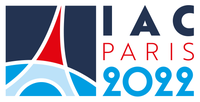›2016 KROME Computational Astrochemistry School
Rationale
The chemistry plays a crucial role in many astronomical processes because it regulates the cooling and heating of the gas and it provides a potential pathway to compare numerical simulation with observations.
To include a comprehensive chemical model in a simulation is in general a complicated issue, as the chemistry per se presents several bottlenecks: solution of stiff ordinary differential equations, tight coupling with the thermal evolution of the gas, computational efficiency, selection of relevant processes etc.
Many simulations are therefore still based on simplified frameworks where a particular network is hardcoded, often involving simple and not very efficient solvers.
What is KROME?
KROME has been developed to solve the chemical and thermal evolution of the gas in astrophysical problems. Its interface can be easily used in any framework code simplifying the computational efforts in building the rate equations and the related physical processes.
KROME is a flexible library that can be easily embedded in any code. It consists of a Python pre-processor which provides all the FORTRAN routines needed to solve the system of rate equations along with the thermal evolution. A C/C++ interface is also provided.
KROME is already interfaced to several widely-used hydrodynamical codes, such as Enzo, FLASH, and RAMSES, and has been succesfully employed in several applications in different fields (formation of the first stars, of massive black holes, of carbon-enhanced metal-poor stars, turbulent molecular clouds, ISM filaments, ...).
More details about KROME can be found on the kromepackage.org website.
School Aims
The aim of the school is to introduce the students to a number of current topics in astrochemistry. During the morning sessions the focus will be on theory, while in the afternoon the students will apply the theory through hands-on exercises. This will allow the students to explore many interesting aspects of the physical processes in the interstellar medium, such as non-equilibrium gas chemistry, dust physics, thermal processes, and photochemistry. In addition the school will introduce long-wavelength observations, and the practical aspects of linking numerical simulations with synthetic observations.
School organization
Morning sessions: dedicated to general talks about chemistry in astrophysics, thanks to the participation of several world-leading international speakers
Afternoon sessions: aimed at dealing with practical exercises to improve the skills of the participants in modelling the chemistry and the microphysics in realistic astrophysical environments. The students will be constantly supervised by tutors to maximize the results.
Main topics
Chemical networks
Thermal processes
Photochemistry
Dust physics
Chemistry with ALMA
Observational chemistry
Track this event on your Apple calendar














 Italy
Italy